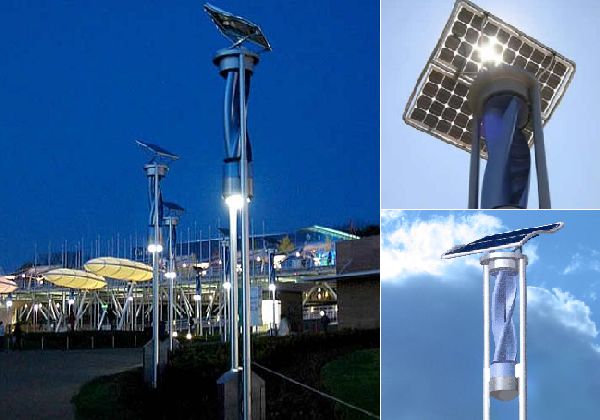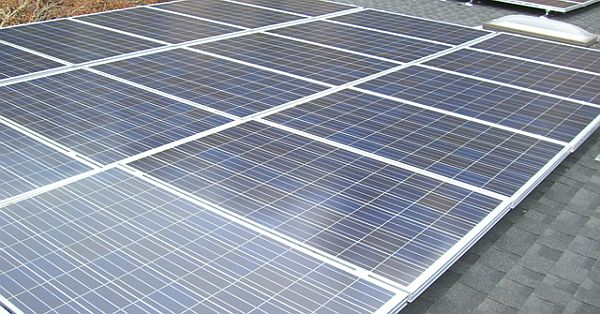
What's Next: Eco friendly hybrid energy generating systems
As we know it
As we move towards a time of increasingly depleted energy resources, we find ourselves faced with the question of how to sustain ourselves and the planet. As it is not feasible to continue using conventional sources like coal and natural gas, we’re leaning more towards renewable sources like solar, tidal, and wind energy. They can produce as much, if not more, power than conventional sources, provided they are harnessed properly using the right technology.
As of now, many projects and makers of consumer goods are making use of solar energy to power their products. However, in order to be able to generate more energy, a combination of two or more renewable sources is more feasible. This hybrid power ensures a more regular energy supply. The only drawback is that investment can be heavy even though it’s just a one-time expense. This makes it difficult for towns and cities to rely on hybrid power to meet their energy requirements.
Need for change
If we want hybrid power to be the primary source of our energy requirements, we’ll need to find ways to make it more viable. If we can tap into it resourcefully, we could very well see the end of the planet’s energy problems. This combination of two sources will also allow for more consistent supply. For instance, during rainy and cloudy weather, solar cells may not be able to harness sufficient solar energy, but if buildings or equipment combine wind turbines, those turbines could supplement the required power. This will help offset power outages and allow for a steady supply of power.
What’s next?
1. Kazekamome Remote Hybrid

What’s new?
The use of hybrid power doesn’t necessarily have to be applied to mega projects. If one were to use it to power smaller projects and systems on a large scale, we could see a significant reduction in the load on power grids. The extra energy could then be used for other applications.
Canada’s Hybridyne Power Systems has designed a streetlight that makes use of both the wind and the sun to power itself. While still in the conceptual stage, the Kazekamome Remote Hybrid would cost lesser than a conventional streetlight to operate. It is equipped with 150W-180W solar panels and small axis wind turbines of 400W as well as special luminaries that switch on with the use of a light sensor when needed. The streetlight can also be equipped with a security webcam which is Wi-Fi enabled.
What difference will it make
The Kazekamome Remote Hybrid doesn’t have to rely on external power sources to operate and is fully self-sufficient. Easy to install and very practical, it can be set up in any place that requires lighting. Municipalities could save as much as $43 per streetlight per year, which is the cost required to operate a conventional streetlight.
2. Duke University hybrid solar system

What’s new?
We all know the importance of solar cells to trap the sun’s heat and convert it into power. But, an innovative engineer named Nico Hotz is making use of them to create hydrogen instead. The hybrid system comprises of a maze of glass tubes that contain methanol and water. When the water and methanol are heated by the sun, hydrogen is produced owing to a catalytic reaction. It is believed that the hydrogen which is produced in this manner is purer which will allow for a more uninterrupted power supply. Hotz’s system costs about $7,900 to install, and while that may seem a lot, it is only slightly higher than conventional fuel generators and cheaper than solar installations.
What difference will it make
The amount of sunlight absorbed is about 95 percent, which is significantly higher than conventional solar systems. This means that just five percent of solar energy is wasted.
3. Volther hybrid photovoltaic-solar thermal collector
.jpg)
What’s new?
Conceived by Solimpeks Corp, a Turkish company, the Volther hybrid photovoltaic-solar thermal collector uses the sun to produce electricity as well as hot water. While solar generators are now being widely used, much of the power output is comparatively less when compared to the amount of solar energy they capture. Solimpeks Corp managed to turn this problem around by enabling the Volther collector to recapture excess heat. The whole set up also takes up much less space as the system handles the job of both a solar energy generator and hot water system.
What difference will it make
Most photovoltaic panels are negatively affected by heat. But, the Volther collector has water circulating around the PV cells to keep them cool. This makes them last longer. Not to mention, the ability of the system to act as a solar heater and solar generator would cost less than if one were to make use of two separate systems.
http://digg.com/newsbar/Alternative/what_s_next_eco_friendly_hybrid_energy_generating_systems
